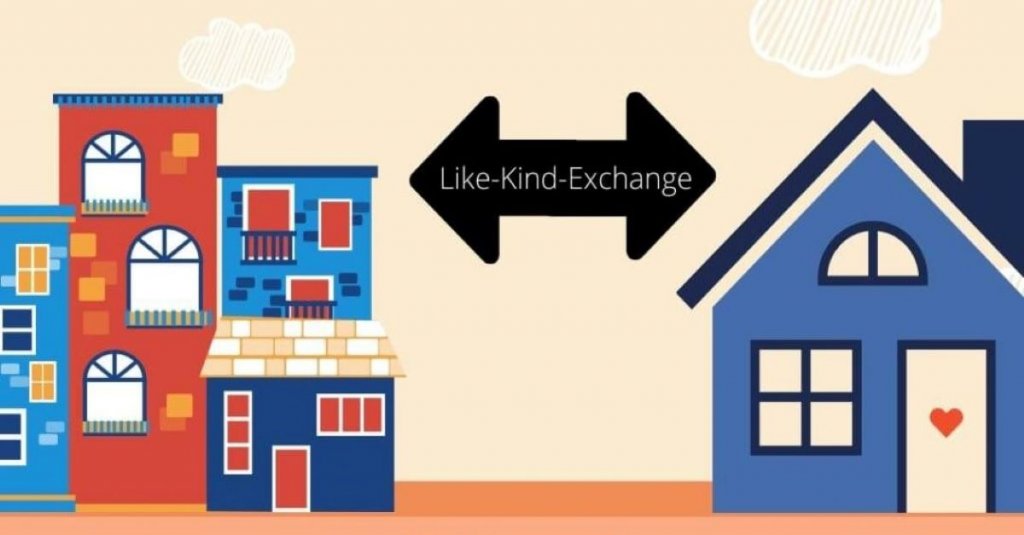Understanding tax codes isn’t most people’s idea of fun—and for many Utah property owners, tax law can feel overwhelming. But if you’re looking to sell real estate in Utah, there’s one powerful exception worth your attention: the Section 1031 exchange, a tax-deferral strategy for exchanging like-kind properties.

The Do’s and Don’ts of a 1031 Exchange
A 1031 (or “like-kind”) exchange has entered popular discussion, particularly as homeowners are becoming increasingly concerned about the potential tax implications of selling their homes. And with good reason, Capital gains tax from the sale of property has been known to be as high as 20 percent in many cases.
The average Utah home sale in 2023 was roughly $493,221. That’s about $98,000 in taxes if the house sale is not your personal residence (must meet IRS requirements). $98,000 you could have saved.
But before you consider a 1031 property exchange as a potential solution for capital gains tax, let’s examine what it is first; as well as why you should and more importantly when you shouldn’t.
What Is A 1031 Exchange?
A 1031 exchange occurs when one property is exchanged for another of equal value. It was at one time almost exclusively the domain of commercial real estate holders, but has since become popular among homeowners looking for a convenient way of avoiding tax penalties as a result of a property sales gain.
More specifically, the advantage of a 1031 property exchange is the result of the tax basis of the former property being transferred to the new one. As long as there isn’t any real profit made, it’s considered a capital gains loss. What does that mean for homeowners?
No actual taxes are due. In fact, your investments can continue to grow—entirely tax-deferred. In theory, you could roll over the tax basis from property to property. There’s no actual limit on how many times or how frequently you can perform a 1031 property exchange.
Almost no limits.
What Are The Rules Of A 1031 Exchange?
- Federal law requires you within 45 days after the sale of one property to identify another of equal value in order for it to qualify as a 1031 property exchange.
- Final closing of the purchase of any replacement property must be made within 180 days after the sale of your property.
- If property is exchanged for property of a lesser value during a 1031 property exchange, it’s considered a capital gain—meaning it’s subject to the original 15 to 20 percent capital gains tax you were hoping to avoid. Any cash left over after purchasing a replacement property is subject to tax.
What To Consider About A 1031 Exchange
- Do: A ‘delayed’ exchange through a third party intermediary who will hold the cash for you and use it to purchase the swapped property.
- Don’t: Accept the payment yourself. It would automatically make the purchase a taxable exchange and hold you liable for a capital gains tax.
- Do: Complete the purchase only after you sell.
- Don’t: Use your own CPA, attorney or financial planner as an intermediary. IRS law dictates no 1031 exchange can be completed using a third party you have a personal or professional relationship with.
- Do: Consider using rental properties or vacation homes during a 1031 property exchange.
- Don’t: Use your primary residence. It’s not considered a business investment and subsequently not subject to capital gains tax unless it’s sold for greater than fair market value.
- Do: Consider exchanging residential for commercial space and vice versa so long as it is of equal value.
- Don’t: Exchange property which still has debt attached for a smaller liability. Any difference is subject to both tax and creditor payments.
- Do: Document your intention of conducting a 1031 exchange in your purchase & sale agreement. It’s legally required under federal tax law.
- Don’t: Reinvest proceeds in property you currently own or may have previously owned.
- Do: Invest in property in the US or US Virgin Islands only. Foreign investments do not qualify.
- Don’t: File that year’s income taxes until after the 1031 exchange occurs.
Reverse vs Forward 1031 Exchange
A 1031 exchange and a reverse 1031 exchange are distinct strategies utilized within real estate transactions in the United States. These tactics enable investors to sell and purchase properties while deferring capital gains taxes. However, their application and procedures differ significantly:
1. 1031 Exchange (Forward Exchange)
A conventional 1031 exchange, often referred to as a forward exchange, involves an investor selling a property (known as the relinquished property) and subsequently utilizing the proceeds to acquire another property (the acquired property) of equal or greater value within a specified timeframe. This method entails several crucial conditions:
- Both the relinquished and acquired properties must be utilized for investment, business, or trade purposes.
- The complete sale proceeds from the relinquished property must be employed for acquiring the replacement property.
- A strict timeline is in place, necessitating identification of potential replacement properties within 45 days and finalization of the entire process within 180 days.
Adhering to these criteria enables investors to postpone the payment of capital gains taxes upon the sale of the relinquished property.
2. Reverse 1031 Exchange:
Less common but equally valuable, the reverse 1031 exchange follows a different sequence. In this scenario, an investor procures a replacement property before selling their existing property. This approach is beneficial when the investor identifies a desired replacement property but has yet to secure a buyer for their current one. The core features of a reverse 1031 exchange include:
- Involvement of an Exchange Accommodation Titleholder (EAT) or Qualified Intermediary (QI) to temporarily hold either the relinquished or replacement property during the process.
- A 45-day window to identify the relinquished property and a total of 180 days to finalize the exchange, mirroring the timelines of a standard 1031 exchange.
- Adherence to precise IRS guidelines, which often require intricate logistics and financing arrangements compared to regular exchanges.
How a 1031 Exchange on a Primary Residence Works in 8 Steps
Step 1: Understand the Basics
To embark on a 1031 exchange for your primary residence, it’s crucial to grasp the fundamentals. The Internal Revenue Code (Section 1031) permits homeowners to swap their primary residence for another property of equal or greater value while deferring capital gains taxes.
Step 2: Establish Qualification
Ensure that your primary residence meets the criteria set by the IRS. The property must have been used as your principal residence for at least two of the past five years before the exchange. Also, you must not have conducted a 1031 exchange on another property within the last two years.
Step 3: Consult with Professionals
Engage the services of a Qualified Intermediary (QI) or Exchange Accommodation Titleholder (EAT). These professionals are well-versed in the intricacies of 1031 exchanges and will guide you through the process while adhering to IRS regulations.
Step 4: Identify Replacement Property
Within 45 days of selling your primary residence, you must identify potential replacement properties. Keep in mind that you can identify up to three properties, or more under specific rules. The replacement property options should be within your budget and meet your needs.
Step 5: Acquire the Replacement Property
You have 180 days from the sale of your primary residence to acquire the replacement property. Once you’ve selected a suitable property, proceed with the purchase. The purchase amount must be equal to or higher than the net selling price of your relinquished property.
Step 6: Complete the Exchange
Once you’ve acquired the replacement property, work with your QI or EAT to finalize the exchange. The process involves the transfer of ownership, documentation, and adherence to IRS guidelines.
Step 7: Move In
After completing the 1031 exchange, you can move into the replacement property and establish it as your new primary residence. However, remember that the property’s usage must align with the IRS rules.
Step 8: Consult a Tax Advisor
While a 1031 exchange defers capital gains taxes, it’s essential to consult a tax advisor to understand the implications of the transaction fully. There might be certain tax obligations down the line.
What If The Value Of My Property Has Actually Decreased?
If the value of your property has actually depreciated since your initial investment, it’s likely claimable as a tax loss; meaning you could actually stand to profit from its sale without paying a capital gains tax.
At Gary Buys Houses, we help homeowners find a convenient solution by purchasing depreciated secondary properties as is; sometimes in as little as 3 to 5 business days. We can give you a fair estimate on your secondary property that could potentially allow you to claim it as a tax loss and still make money in the process.
Keep in mind that every situation is entirely unique and tax laws are complex. Please contact a trusted tax specialist if you have any specific questions.

Looking for a 1031 custodian
A local title company can do that for you. Please text me at 801-382-9199, and I can refer you to someone.
Can you identify the property you plan to buy before the sale of the current property?
Yes. See #10 in this link. https://www.firstexchange.com/pages/contenttop-ten-identification-rules-1031-exchanges
1-I’m a resident of Utah. Can I use a 1031 exchange if I sell apartments in California and use the funds to buy apartments or commercial in Utah OR Colorado?
2-Is there a “Claw-Back provision exposure, meaning when I eventually sell the exchanged property in UT or CO will I pay gains tax to CA and UT or CO?
Please consult a tax attorney or CPA versed in 1031. Yes you can use the funds from a CA sale to buy in another state. I don’t know the answer to your second question but will try and find out.
We are selling our Utah vacation home on Wednesday and we just found a new location also in Utah to buy. We did not declare this new home in the selling paperwork. Will we be able to do the 1031 exchange?
The property you sell and the property you purchase must be for productive use in a trade or business or for an investment. Your vacation home may be considered a residence and not eligible for a 1031 exchange. Did you ever rent it out or maybe it can be considered an investment? Ask your title company if they have a 1031 expert you can talk with about your specific situation or consult a tax professional to find out if the property you sell and want to buy qualify. Thank you.
I recently had to move “voluntarily” out of the country for immigration purposes. My family moved in with my in-laws and we are currently renting our home. If we wanted to sell and buy a multifamily or even a different home to keep renting would we have to do a 1031 to defer the taxes on the sale or does that not apply because is our primary residence?
It does not apply because it is your primary residence. However, typically, no taxes are due on the sale of a primary home. You must live in the home for 2 of 5 years. The 2 years does not need to be consecutive. Please get the advice from a tax attorney to verify my statements.